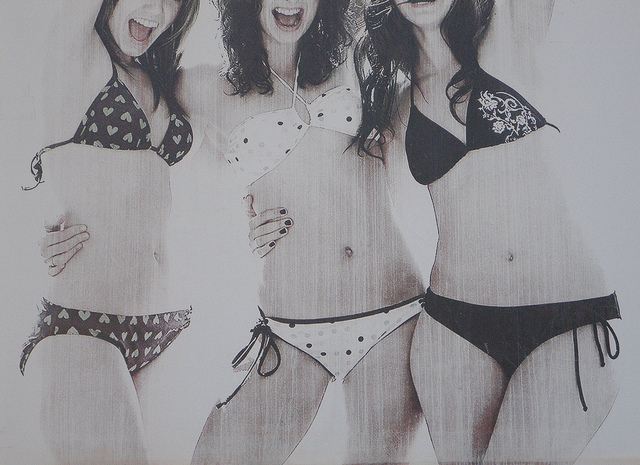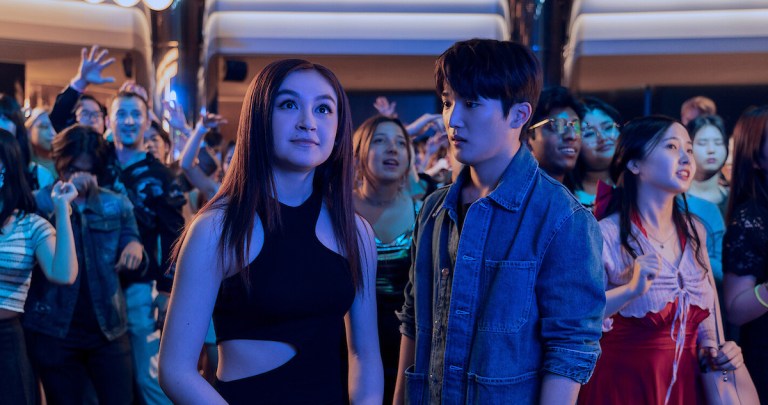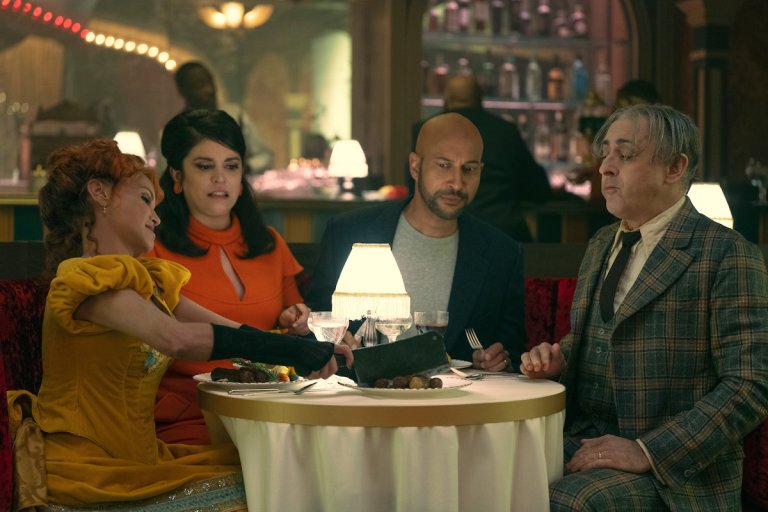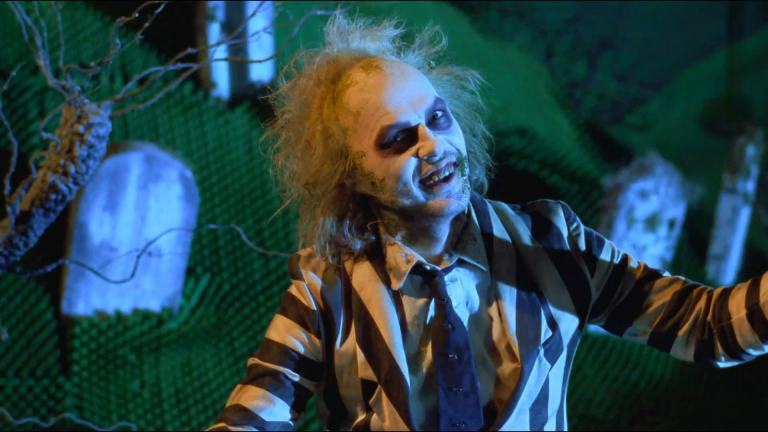Brainstorming The Botox Brigade
By ![]() Viva Bianca
Viva Bianca

“Will you ever get work done to your face?” It felt like a fly had suddenly flown into my mouth and as I turned to discover the man behind the question my abdominal muscles swatted it. An entertainment lawyer from New York on a business trip in Los Angeles who happened to be sitting at the same dinner table as me was leaning past a few people who sat between us. His cheeky eyes gleamed into mine with anticipation as I took a breath and began a considered answer: “Whilst I can never say never, I would hope that I continue to possess and further develop the self-love that would protect me from any such self mutilation or unnatural enhancement.” I quickly snuck a peak at the rest of the table, most of whom had evidently also been arrested by the man-from-Manhattan’s brazen question. The faces tightly smiled back at me as I continued, “I guess I’m just lucky that I don’t value my looks as my sole currency.” The lawyer took a beat and then winked, “You pass.”
Being from Australia, the idea of “getting work done” was a foreign concept. Furthermore, the association of “actor” and “plastic surgery” just didn’t exist. In fact, we Performing Arts students were the most real, authentic (at least we thought we were) and anti-conformity of them all. We were artists who studied theatre, read Chekov in parks, wore second-hand clothes from Goodwill stores and spent hours on mats in voice class learning how to breathe into our rib-cages. And as a girl who was easily reduced to a pretty face, I worked hard against the blonde cliché and to assert my ideas, opinions and moreover, talent.
But here I am in the heart of Hollywood – the birth place of many of the greatest films in cinema history; a city bursting at its’ seams with writers, producers, directors, actors, comedians, cinematographers, designers, composers and musicians. And yet often clouding this cultivation of intellectual and creative resplendency, rubbing shoulders down the very same Sunset Strip, is the much less aspirational face of the business. The yin to it’s yang. The face that has wholly and fully bought into the myth (and now plays it’s numero uno ambassador) – that youth and beauty are the best. A myth fed by the media and that pollutes the minds of young girls and women of all ages. A myth that was created by men.
Youth. The thing about youth is, the thing that we all find so perfectly enchanting about it, is it’s unselfconsciousness. Like how a newly blossomed flower dances delicately in the wind, or as a floppy puppy playfully chases it’s tail, youth effortlessly exists in it’s ignorant innocence, absent the awareness of both its own own perfection and of the life burdens that lay ahead. This is why the saying goes that young people drive cars as if “they were invincible.”
But as soon as youth becomes a self-conscious display or an imitation of another, it’s glory dissipates. It is no longer youth. Patty Smith captures this notion in her 2010 New York Times best seller novel, Just Kids, “Who can know the heart of youth but youth itself?” Young people don’t know that their youth is envied by the world and that one day they too will yearn to be young again. They just are young. Youth effortlessly blossoms with the possibilities of the future and the wonderment of the now.
Biological laws aside, to recreate such a moment in time, such a delicate, fleeting spark, is simply impossible. So instead, science came up with plastic surgery. Botox freezes muscles thus preventing wrinkles to form. And then there’s the fillers. I’m told that “plumping up” those “sinking bits” helps maintain a cherub visage. The freezing part has always seemed humorous to me because one of the signature idiosyncrasies of children is how their faces marvellously squish and move about like play dough when they express themselves. So to congeal expressiveness seems far from a youthful enterprise. And why actors, the people who’s job it is to express the human heart to itself, would freeze their ability to express, is near absurd.
Beauty. Lips are pumped, noses modified (shorter, smaller, sweeter), cheek bones lifted, brow lines sculptured, jaw-lines defined, boobs are made bigger and butts made smaller. For what? To conform to the guidelines of beauty made up by someone none of us have ever met. And worst of all, as more people continue to give in to the big bad beauty-bully, the worse it gets for everyone else.
As an actress I’ve always looked to the pillars of integrity and reason in the business. When exiting the theatre after her New York premier of the stage play A Street Car Named Desire in 2009, Cate Blanchett was greeted by hundreds of signature hungry fans. As she generously signed their flyers on which a large portrait of her face was printed, Cate repeated, “That’s clearly all photo-shop, I don’t look like that at all, here’s the real me.” A rare ambassador of truth, intelligence and real beauty.
But how infrequent it is to see a female movie-star today in her 40’s absent “work”? It’s not that I don’t like actors who go down the old nip-tuck road (hell, I hear even Tom Hanks is doing it!), and if anything I feel compassion for them (the pressures on actors to keep up appearances in Hollywood is unquestionably fierce), it’s just that I find it harder to connect to their work. There’s something strangely alien about a botox-inated person’s smile or cry. But of course – they’re feeling the emotion inside however their muscles aren’t moving to express.
LA based artist friend of mine, Corazon Del Sol, remarked on the subject, “people who get work done wear their pain on their face like a mask.” I agree, plastic surgery is like a public mask. A mask that desperately grasps at a moment in time or at something other than who the person is, while it’s audience (the world) sits back, eats pop-corn and switches channels. Look at Michael Jackson. A beautiful black boy so desperate to “look” another way that he went through a process of self mutilation in order to achieve meta-morphisis. And look what came out the other side! An extreme example, I know, but really what’s the difference?
Perhaps the pressing discussion is – what drives a person to do this to themselves? It would be too simplistic to say “because they want to look better, or younger or like that person”. Someone who is driven to perform surgery on their face and/or body in order to look different to who they essentially are must surely be deeply discontent with their true self, and be suffering from a profound disconnectedness with their own unique magnificence. (Not to get all new age on you, but really, each of us is a genuine miracle!) I once had a boss who was indeed an angry, lonely woman and who would frequently get botox. When her injections were ripe, I was frightened to look at her. When I would look, it seemed as if her lonely eyes were peering through a Pinocchio mask. I wanted to reach forward, take it off and give her a big hug.
The aspiration of youth is largely a Western creation. In Italy older women are also celebrated for their beauty and sexuality. I have memories of sun-baking by hotel pools throughout Tuscany alongside several Italian ladies in their 50’s who would proudly lounge about in polka dot bikinis.
Of course with age comes wisdom, and in many cultures this is revered above all. Cate Blanchet (yes, good old Cate) once referred to her wrinkles in an interview as “the song lines of life”. Without those wrinkles aren’t we robbing ourselves of a history and a badge that honors our years on this amazing planet? After all, what’s there to hide from? We all know that we are born, journey through this life, grow old and die. My mother talks of growing old gracefully. Grace… I like the sound of that.
Thank goodness for the the emergence of female youth icons such as Lena Dunham (Girls) and Tavi Gevinson (Rookiemag.com) who offer hope and carry beacons of light for our daughters to come. With her ground-breaking HBO series, Lena Dunham has marvellously taken on the beauty-bully head-first and shown him who’s boss. Teenage editor and blogger (she’s literally still in high school) is leading a new generation of girls on an internet ground-swell back into the future of feminism. In many of her interviews including an impressive TED Talk, Tavi talks about the importance of opening up the discussion of female characters in our culture; that many of Hollywood’s iconic female characters (she references Cat Woman) are only two dimensional and so limit a society’s comprehension of the multi-complexities of what it is to be a woman.
I would extend this discussion to frozen faces. How can a frozen face with puffy Joker lips possibly portray the many dimensions of the female experience? And more immediately, what is the implicit message such a physical statement communicates to it’s audience? – That looking different to the status quo is not OK; that growing old is not OK, not beautiful and that old people should not be seen; that men’s expectations of us can control us. Well as far as I’m concerned, that message is not OK and I welcome real faces and a real discussion. ![]()




